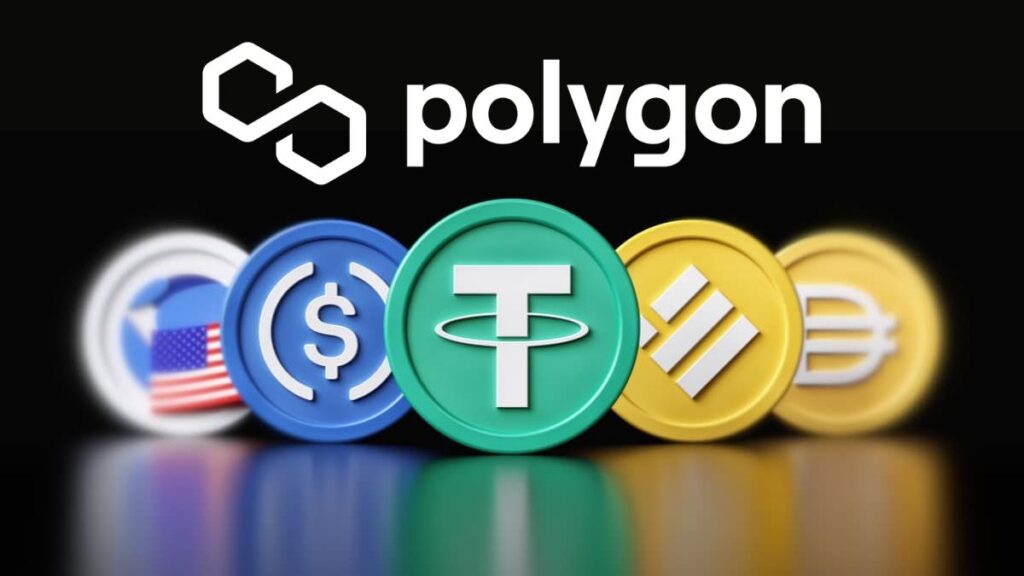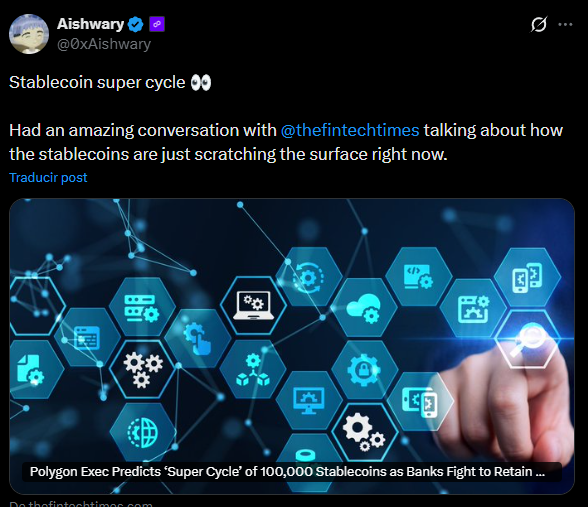TL;DR
- Polygon anticipates a stablecoin supercycle driven by a global shift in which capital leaves traditional banking infrastructure and migrates toward on-chain payments and settlement.
- Aishwary Gupta projects that banks and tech companies will issue their own stablecoins or tokenized deposits.
- The analysis outlines a payment network where users operate in different currencies and conversions occur automatically.
Polygon projects a new phase for the crypto industry and places stablecoins at the center of a structural shift.
Aishwary Gupta, head of global payments and RWA at the organization, argues that the market is moving toward a supercycle fueled by massive adoption that could lead to as many as 100,000 issuers within five years. His premise is straightforward: every bank and every technology company will end up launching its own stablecoin to maintain its position in a market where capital no longer circulates through traditional banking rails and instead moves across programmable networks.
The analysis stems from a trend that has been gaining strength for the past two years. On-chain settlement offers instant finality, operational transparency, and the ability to automate processes that currently depend on fragmented systems. This combination makes it easier for businesses and users to hold digital value at all times and use stablecoins as a bridge between fiat money and the financial applications running on blockchain.
Banks Won’t Stop the Rise of Stablecoins
Gupta argues that banks will not try to block this movement. Instead, they will issue deposit-backed tokens to reduce costs, accelerate transfers, and preserve their relationship with customers. If that scenario materializes, competition for deposits will intensify and force institutions to operate in an environment where liquidity moves faster and where the public infrastructure of blockchains dictates the system’s overall efficiency.
This shift will also reshape payment structures. Polygon’s vision describes a setup in which senders and receivers use different currencies — fiat, stablecoins, or tokenized assets — while conversion happens in the background. The result is a frictionless payment network that hides the complexity of routing, exchange rates, and intermediaries.
Polygon Will Hold a Strategic Position
If this supercycle unfolds with the scale Polygon anticipates, stablecoins could become the dominant form of digital money. Chains that support high throughput, low fees, and real-world asset integration — such as Polygon — would gain unprecedented relevance as settlement layers for payments, tokenized deposits, and financial applications.
The coming months will provide key signals. The market will track new stablecoin launches from banks and tech companies, the growth of on-chain payments, regulatory developments around digital currencies, and the expansion of tokenized deposits and RWAs. These factors will determine whether the supercycle thesis becomes a central pillar of the crypto industry.













